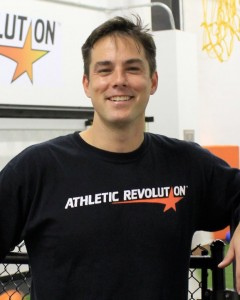Programming Fun, Function, and Youth Training Variety for 6-9-Year-Olds
By Dave Gleason
Programming for our youngest champions can be a tricky endeavor. Our primary focuses for our Discovery Classes are to a) create a broad, wide-ranging base of activity and b) allow our champions to explore movement through fun.
That said, in order to teach movement patterns without running the risk of repetitive motion injuries it is imperative to use as much variety as possible. The phrase we often use when describing how to effectively program in this manner is “repetition through variety”.
Now the question is how to provide this concept without seeming randomized or having no rhyme or reason.
Here are two things to consider:
- AR Programming Templates. Our proprietary programming template system will not only save you time, it will ensure your sessions will incorporate all of the important elements of training young children every time.
- Body Awareness and Movement Exploration
- Object Manipulation
- Coordination Enhancement (Rhythm, Reactivity, Spatial Awareness, Kinesthetic Differentiation and Balance)
- Game Play and Cooperation
Pick two to three activities for each category. The categories are a constant. What changes are the activities, exercises and games you choose for your young athletes. There will be high likelihood of crossover meaning you may choose an exercise that covers more than one category. Your decision to choose the proper category depends on your goal(s) for each class and or individual. This is the art of coaching.
- The Desired Movement. A prime illustration is triple extension of the hip, knee and ankle. Commonly called a squat by most trainers, triple extension can be achieved in several ways. Here is an incomplete list:
- Squat
- Alternating Lunge
- Lunge Walk
- Lateral Lunge
- Back Lunge
- Back Lunge with Rotation
- Split Squats
- Jumping
Do not forget that all of these examples can be very effective for your younger athletes, however they need to be administered in a FUN context. Consider “monster walks” for lunge walks, embellishing the role of a monster! Play “Levels” when administering the squat or split squat with cueing of “high, middle and low”. Your athletes will be required to move to each level as you call them out verbally or by hand signals.
Use repetition through variety in your programming for effective and FUN classes and your younger classes will not only grow rapidly…they are a feeder system to your older classes!
Keep Changing Lives!


